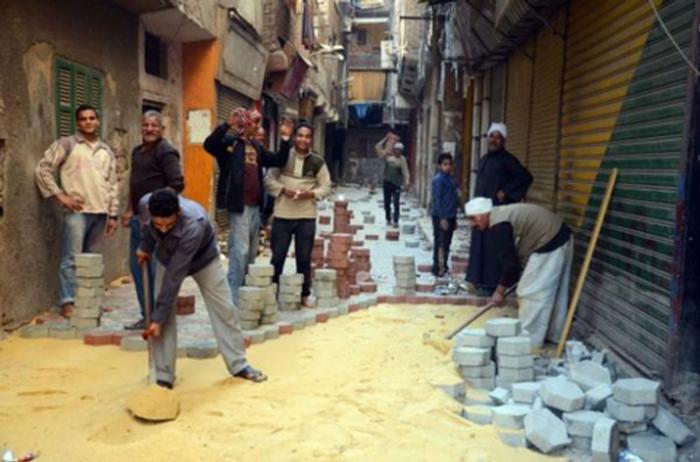Mahmoud El Kady and Tia Ashraf Aziz - ProposalEconomic Architectonics: Local Initiatives for Live/Work HousingThe community of Hay el-Zabaleen (the garbage collectors’ neighbourhood) contains thousands of ill-developed housing units for low-income garbage collectors and their families. The cultural and historical significance of the community, coupled with its established economic advantage in garbage recycling (recycling up to 85 percent of Cairo’s trash), makes it an eye-opening example of the possibilities of low income live/work housing.
Despite the el-Zabaleen’s resilience, the community has been deligitamized by the state and has suffered from the unjust allocation of resources like many of Cairo’s working class neighbourhoods. Most of the garbage collectors in el-Zabaleen are part of Egypt’s Coptic Christian minority, and have faced decades of generational disenfranchisement, including their forced relocation from Manshiyet Nasser, an area that is much closer to the center of the city, almost 50 years ago. The community has been subjected to multitudes of constraints on their economic activities and have received very limited substantial support from the state. They have fostered a very distinct socio-cultural environment within Mokattam, starting with the construction of their district’s church, the Cave Church, which holds a remarkable significance amongst the Christian Egyptian constituency.
The economic underpinnings of the community must be addressed to create a sustainable and responsible housing model. The intention is to integrate the economic patterns and systems of the community in the design of its housing to achieve a live-work design that engages both dimensions dialectically. In an increasingly neoliberal socio-economic environment, economic and household activities are hardly separate, especially in the case of el-Zabaleen’s niche economic specialty.
The design process should be part of a larger local community initiative that mobilizes the residents economically and politically. Powered by the residents themselves, the local initiative will not only provide services to the community, but will also facilitate and moderate the design surveys conducted to solicit the resident’s opinions. Not only will the design workshops explore general conceptions of what life-work balance should look like, but they will also investigate the micro details of working in the workshops and warehouses of the Zabaleen.
This project has a plethora of potential financiers, including the Sawires Foundation for Social Development, which was founded by one of the country’s wealthiest Coptic families, the Ministry of Housing Utilities, which is currently pursuing several urban development projects in collaboration with the private sector, and the charities of the Coptic church, which allocate specific budgets for housing projects for low-income families in Cairo. To decrease the design-build costs, the project will depend on university students to combine their knowledge of economics, anthropology, architectural design, and development to conduct the necessary design fieldwork and research. As such, the residents will be involved in the construction and eternal alteration and adaption of the housing project.
The proposal aims to harness the powers of community involvement to contribute to the welfare of the residents and drive the discussion and decision-making process of the project’s design. Steering away from imposing generic concepts of economic and social sustainability, this proposal recommends the incorporation and development Additional Help and InformationAre you in need of assistance? Please email info@berkeleyprize.org. |


